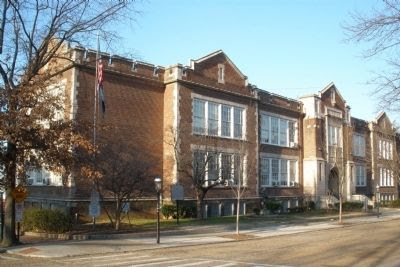 |
| Union Hotel |
 |
| Otis Manson |
Adams, a physician, merchant and Richmond's sixth mayor, built a mansion on Church Hill (also designed by Manson) located a half block southwest of St. John's Church where Patrick Henry gave his "Give me liberty or give me death" speech. Adams father, Colonel Richard Adams, (1760-1817) owned most of the land on Church hill. Once a friend of Thomas Jefferson, they fell out because of Jefferson's choice to build the Capitol on Shockoe Hill instead of on Church Hill. The younger Adams lost both the mansion and the hotel in the financial panic of 1819. Adams sold the mansion to John Van Lew from Philadelphia, whose daughter, Elizabeth, would later became the notorious union spymaster during the civil war.
 |
| Adams/Van Lew Mansion |
 |
| Elizabeth Van Lew |
She would live in the house the rest of her life with her cats despite being ostracized and alienated by the locals for her treason. After the war, General Grant rewarded her for her services by appointing her head postmistress. After she died in 1900, the city of Richmond expressed their gratitude for her services by tearing her house down. The site is now occupied by Bellevue Elementary School.
Due to its distance from the Capitol, the Union Hotel never had enough business. It was sold several times, changed its name to the United States Hotel, used as quarters for slave traders and as a hospital during the Civil War. In 1838, the hotel was rented to Hampden-Sydney College in Farmville and became the Medical College of Virginia (MCV). Seven years later, MCV moved into the newly built Egyptian building.
 |
| The Egyptian Building |
The Egyptian Building was designed by architect Thomas S. Stewart out of Philadelphia, who also designed the newly built St. Paul's Episcopal Church at 9th & Grace. Funded by loans from the Commonwealth & the City of Richmond, the Egyptian Building is considered one the finest examples of Egyptian Revival architecture in the country. The building is decorated with hieroglyphics, winged disks and various other ancient Egyptian motifs and imagery and is surrounded by obelisks connected to a cast iron fence decorated with miniature hermai or sarcophagi.
After the war, a former slave trader Robert Lumpkin, left his wife, Mary Lumpkin, herself a slave and mother of Lumpkin's five children, the former slave pens known as Lumpkin's Jail also known as "The Devil's Half Acre."
The American Baptist Home Mission Society (ABHMS) founded the Richmond Theological Institute in the old slave pens and later moved into the hotel. In 1899 the Richmond Theological Institute merged with Wayland Seminary to form Virginia Union University and moved to its current, more pastural campus on Richmond's Northside. VUU merged with Hartshorn Memorial College in 1932, then located on the site of today's Maggie L. Walker Governor's School. It is dotted with landmarks and has won several national sports titles.
 |
| The Belgian Tower donated from the 1939/1940 World's Fair in New York |
 |
| Religious Studies Building |
 |
| Industrial Hall, "one of the campus’ original eight buildings dating from 1899" is being repurposed as an art gallery. * |
The Richmond Professional Institute (RPI) started off life as the Richmond School Of Social Economy in 1917 and was located near the Governor's Mansion. It evolved into a "Division of the College Of William & Mary" in 1925 and moved to 827 W. Franklin Street and was renamed Richmond Professional Institute(RPI) in 1928. RPI then merged with the Medical College of Virginia in 1968 to become Virginia Commonwealth University. With over of 31,000 students, it has the largest student body in the state.
The Fan District, once a prestigious suburb with it's intact collection of early twentieth century Victorian & Edwardian styled homes has been overwhelmed with apartments, dormitories and tens of thousands of students and post grads and all that comes with it. It's classic town vs. gown. The stupendous growth MCV and VCU has had a tremendous economic impact on the City of Richmond, but has been tougher on the surrounding historic neighborhoods. VCU architecture is a mix of the traditional and the modern with newer building crossing Belvidere into the downtown district near the Jefferson Hotel with a scattering of churches and theaters that once served the neighborhood.
 |
| Cathedral of the Sacred Heartsurrounded by VCU buildings |
 |
| The Altria TheaterOriginally known as "The Mosque" |
 |
| James Cabel Library |
 |
| Typical Fan Street |
 |
| School of Engineering |
One of Richmond's oldest neighborhoods has been overwhelmed by hospital and medical office buildings. There are too many to list here, but here are some of the few remaining buildings still open to the public. We'll do an entire story on them some day.
- The John Wickham Mansion designed by Alexander Parris
- The White House of the Confederacy where Jefferson Davis roamed the hallways and directed the war.
- The Monumental Church
- The John Marshall House
 |
| Virginia Commonwealth University (VCU) |
 |
| Virginia Union University Architect: John H. Coxhead Richardsonian Romanesque |
 |
| VCU/MCV |
Both MCV-VCU and VUU share a common architectural heritage, the Union Hotel. The hotel was demolished in 1911.
*Style Weekly








No comments:
Post a Comment
Respectful comments and civil discussion are welcome.
Personal attacks and profanity will be deleted.